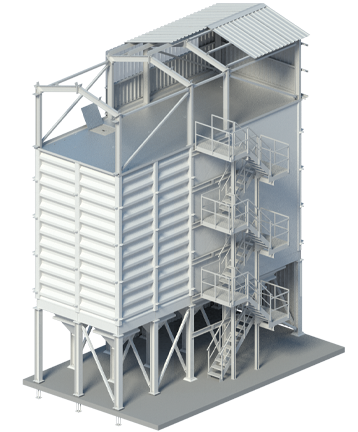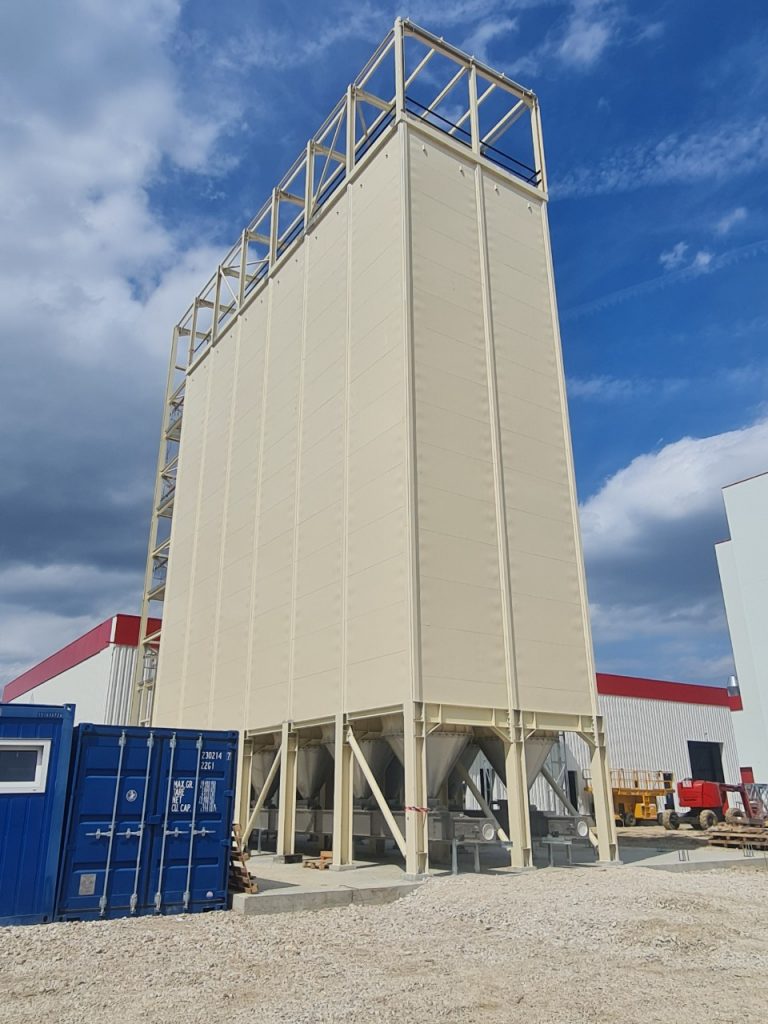Product Overview:
HIGHLIGHTS
Complete steel construction, which can be delivered in several combinations, with center or side outlet.
Each silo plant is designed to meet your specific demands.
Western Technology’s standard silo plants can be divided into raw material silos, delivery bins and process factories.
The silo range consists of large or small, square, round or trapezoidal silo solutions for smooth surfaces, etc. The silo plants are manufactured in heavy, trapezoidal-profiled or face-plated steel plate, welded or bolted to solid corner posts – according to purpose.
Square silos are delivered complete with anchor bolts, supporting construction, hoppers, walls, decks, roof construction, machine decks, ladders, etc. for outdoor and indoor installation. At outdoor installation the silo should be covered with e.g. ordinary trapezoidal steel plates put onto Z purlins or sandwich parts with insulation material.

Production process.
- All steel silo parts are manufactured in a factory, so the quality can be totally controlled, whereas cast in place concrete silos involve more variables such as concrete delivery and weather. The customer must bear in mind that useful life of concrete before use is less than 2-3 hours. After this period, concrete start losing its optimal characteristics.
Design.
- The slip frame concrete process is further complicated by the fact it is a dynamic or continuous process. Rebar placement, concrete quality, etc., all affect the final product. Also, field supervision plays a really serious role in concrete silos: more people working on site, longer period of commissioning (due to weather conditions) and, ultimately, higher costs.
- Concrete silos can be taller than steel silos but these ones have bigger diameters so the total capacity is highest. For this reason concrete silos are only more suitable when the space is really limited.
- It is easier to erect steel silos and also to install accessories like doors, ladders, samplers, etc.
- Steel structure is more flexible, so steel silos have better behavior in case of earthquake.
- Regarding airtight, both structures are normally airtight if the openings are properly sealed.
Price.
- Steel silos generally give you greater storage capacity per dollar. They tend to be more cost-effective because of the higher storage capacity.

Aeration.
- It is easier and more effective to do aeration in steel silos. Aeration horsepower is a non-linear function of grain depth. It is often impossible or impractical to provide the same airflow in tall concrete silos that could be obtained in shorter and wider silos (the case of steel silos). A higher grain depth also leads to a higher heat of compression in the aeration system. This means it takes a lower outside temperature to achieve the same grain temperature, making early aeration more difficult.
Foundation.
- Steel silos do not require the soil to be as firm in order to support the weight of the structure. Sometimes steel silos can be built on land that doesn’t have the higher load-bearing capacity needed for concrete.
There are many details and variables in silo projects and every type of grain storage has pros and cons. The right choice is the one that fits in your infrastructure strategy.

